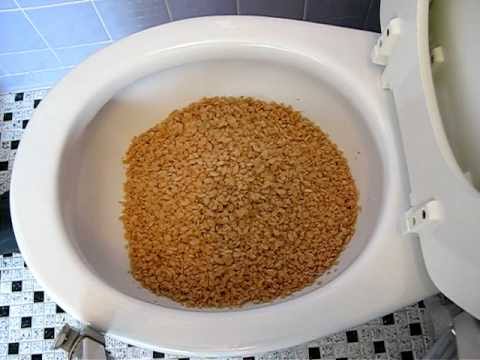Are You Permitted to Flush Food in the Toilet?
Are You Permitted to Flush Food in the Toilet?
Blog Article
Just how do you actually feel with regards to Flushing Food Down the Toilet??

Intro
Lots of people are frequently faced with the predicament of what to do with food waste, specifically when it concerns leftovers or scraps. One common concern that emerges is whether it's all right to purge food down the bathroom. In this write-up, we'll look into the reasons that individuals might take into consideration purging food, the consequences of doing so, and alternate techniques for proper disposal.
Reasons that people may consider flushing food
Lack of understanding
Some individuals might not be aware of the potential harm triggered by flushing food down the toilet. They might mistakenly think that it's a harmless practice.
Ease
Purging food down the toilet may seem like a quick and very easy remedy to taking care of unwanted scraps, especially when there's no close-by garbage can available.
Laziness
Sometimes, individuals may just select to flush food out of sheer idleness, without thinking about the consequences of their activities.
Consequences of flushing food down the commode
Environmental impact
Food waste that winds up in rivers can add to air pollution and damage marine environments. Furthermore, the water made use of to flush food can strain water sources.
Pipes concerns
Purging food can result in clogged up pipelines and drains, causing costly plumbing repair work and hassles.
Sorts of food that need to not be purged
Coarse foods
Foods with coarse structures such as celery or corn husks can obtain tangled in pipelines and create obstructions.
Starchy foods
Starchy foods like pasta and rice can absorb water and swell, bring about clogs in pipes.
Oils and fats
Greasy foods like bacon or food preparation oils should never ever be purged down the toilet as they can strengthen and create obstructions.
Correct disposal techniques for food waste
Making use of a garbage disposal
For homes equipped with waste disposal unit, food scraps can be ground up and purged with the pipes system. Nevertheless, not all foods appropriate for disposal in this manner.
Recycling
Particular food product packaging products can be reused, decreasing waste and reducing environmental effect.
Composting
Composting is an environment-friendly method to dispose of food waste. Organic materials can be composted and utilized to enhance soil for horticulture.
The importance of proper waste management
Reducing ecological damage
Proper waste monitoring methods, such as composting and recycling, assistance minimize air pollution and protect natural deposits for future generations.
Shielding plumbing systems
By avoiding the technique of flushing food down the toilet, property owners can avoid expensive plumbing repair work and maintain the stability of their plumbing systems.
Verdict
In conclusion, while it may be tempting to flush food down the bathroom for comfort, it is very important to recognize the possible repercussions of this action. By adopting correct waste monitoring practices and getting rid of food waste properly, individuals can add to healthier plumbing systems and a cleaner environment for all.
FLUSH FOOD DOWN THE TOILET?
FLUSHING FOOD CAN CAUSE BLOCKED DRAINS IN YOUR HOME
All of the plumbing fixtures in your home are connected to the same sewer pipe outside of your home. This outdoor sewer pipe is responsible for transporting all the wastewater from your home to the Council sewer mains. Even small pieces of food that go down the kitchen sink can cause problems for your sewer. It should therefore be obvious that flushing larger bits of food, such as meat, risks a clog in either the toilet itself or the sewer pipes. Flushing greasy food is even more problematic because oil coagulates when it cools, coating the interior lining of your pipes.
THE TOILET IS NOT A BIN
Food isn’t the only thing that people shouldn’t be flushing down the toilet. People use the toilet to dispose of all kinds of things such as tampons, makeup wipes, dental floss, kitty litter and even underwear. Water goes to great lengths to educate residents about the high costs and stress placed on wastewater treatment systems simply from people flushing the wrong stuff down the toilet. It costs taxpayers millions of dollars each year, and homeowners thousands in blocked drain repairs.
FLUSHING FOOD IS A WASTE OF WATER
Flushing food is a waste of our most precious resource - water. In June this year Level 1 water restrictions were introduced to protect water supply from drought conditions. Much of New South Wales continues to be affected by prolonged drought with recent figures revealing up to 97 per cent of the state remains in drought. Depending on whether you have a single or dual flush toilet, every single flush uses between five and 11 litres of water. In the current climate this is a huge amount of water to be wasting on flushing food that should be placed in the bin (or better yet, the compost).
https://www.jabplumbingsolutions.com.au/blog/can-you-flush-food-down-the-toilet

I was shown that report about through a pal on our other blog. Do you know about another person who is interested by ? Take a moment to promote it. We cherish your readership.
Call Today Report this page